|
Books Should Be Free Loyal Books Free Public Domain Audiobooks & eBook Downloads |
|
|
Books Should Be Free Loyal Books Free Public Domain Audiobooks & eBook Downloads |
|
Fiction |
|---|
|
Book type:
Sort by:
View by:
|
By: H. G. Wells (1866-1946) | |
|---|---|
 The Secret Places of the Heart
The Secret Places of the Heart
Richard Hardy, a member of the British gentry, tries to resolve problems in his marriage as he travels with a psychiatrist. The book is to a great extent autobiographical. H. G. had read some brilliantly composed articles by a writer who wrote under the name Rebecca West. In one piece she called H. G. "pseudo-scientific." He contacted her and asked what she meant. When they met for lunch, it was the beginning of a very intense and volatile relationship. Soon she was pregnant, so he divided his time between her and his wife Jane with their two sons... | |
 Sea Lady
Sea Lady
| |
 Passionate Friends
Passionate Friends
H. G. Wells is best known for his science fiction, but some of his greatest works were in other genres. The Passionate Friends is a love story. It also is a story about dreams, despair, jealousy, sex, the struggle against social convention, the future of civilization, and much much more. It is written by a father to his son, "not indeed to the child you are now, but to the man you are going to be." He writes it so that one day, perhaps when he is dead, his grown son can read it and rediscover him as a friend and equal... | |
 Wonderful Visit
Wonderful Visit
An other-worldly creature visits a small English village, and H. G. Wells uses humour and satire to convey some of the imperfections of Victorian society, as ‘angel’ and humans view each other with equal incomprehension.( | |
 Kipps
Kipps
Arthur Kipps, an orphaned draper’s assistant of humble means, unexpectedly inherits a large sum of money and that is when all his troubles begin. Wanting to marry above his social class, he has to learn how to lead a genteel life, but that is too much for him. You would think that his decision to revert to Ann, his boyhood love, would solve his problems and bring him back to earth and contentment. But even now the consequences of being wealthy are not easy to live with. A poignant tale about ambition and social class in England in the early 20th century by H.G. Wells, a master of this genre, who drew on features of his own life to provide some of the material | |
 Men Like Gods
Men Like Gods
In the summer of 1921, a disenchanted journalist escapes the rat race for a drive in the country. But Mr. Barnstaple's trip exceeds his expectations when he and other motorists are swept 3,000 years into the future. The inadvertent time travelers arrive in a world that corresponds exactly to Barnstaple's ideals: a utopian state, free of crime, poverty, war, disease, and bigotry. Unfettered by the constraints of government and organized religion, the citizens lead rich, meaningful lives, passed in pursuit of their creative fancies... | |
 Bealby; A Holiday
Bealby; A Holiday
Bealby is the comical story of the escapade of a thirteen-year-old boy when he rebels against his placement as a steward's-room boy in the great house of an estate named Shonts and flees—not, however, before thoroughly upsetting a weekend party where the nouveau riche couple renting Shonts is entertaining the Lord Chancellor. - Summary by Wikipedia | |
By: H. M. Egbert (1879-1960) | |
|---|---|
 Jacqueline of Golden River
Jacqueline of Golden River
Jacqueline seems to have contracted a touch of amnesia, as she is found in an apartment with a dead man, and with a weapon in her hand. But she remembers nothing of any incident, remembers not her name nor where she comes from, not even why she is where she was found. She only remembers her father, and that he is in danger. Action and adventure soon follow, as Paul Hewlett and Jacqueline attempt to get answers to her questions, taking them on a journey into Quebec and points northward, and Paul knows that they are being followed during their trip... | |
By: H. P. Lovecraft (1890-1937) | |
|---|---|
 Seven H.P. Lovecraft Stories
Seven H.P. Lovecraft Stories
Howard Phillips Lovecraft, better known as H.P. Lovecraft, was an American author of horror, fantasy, poetry and science fiction, especially the subgenre known as weird fiction and many feel he is the acknowledged master of creepy, weird and unsettling stories. These are seven stories by Lovecraft that literally span his career; some being written when he was barely a teenager and one (The Shunned House) only published after he had died. Each story is unique and strange in it's own way but all of them come from the same mind that gave us the Cult of Cthulhu and other wonderful tales that generations now have enjoyed for their strangeness that resonates with our own inner fears... | |
 Herbert West: Reanimator
Herbert West: Reanimator
"Herbert West—Reanimator" is a story by American horror fiction writer H. P. Lovecraft that was first serialized in February through July 1922 in the amateur publication Home Brew. The story was the basis of the 1985 horror film Re-Animator and its sequels, in addition to numerous other adaptations in various media. You want zombies? Listen to this because Lovecraft was one of the very first and he got zombies right: scary, evil, implacable and out to get you. | |
 The Dunwich Horror
The Dunwich Horror
In a rundown farmhouse near isolated, rural Dunwich, a bizarre family conjures and nurtures an evil entity from another realm, with the purpose of destroying the world and delivering it to ancient gods to rule, and only an aged university librarian can stop them. The Dunwich Horror was first published in 1929 in Weird Tales. | |
By: H. Rider Haggard (1856-1925) | |
|---|---|
 Heart of the World
Heart of the World
Set in the heart of Central America, the adventure novel accounts an enthralling tale marked by zealous adventure, discovery of a lost civilization, and unconditional love. Published in 1895, Heart of the World presents a fusion of suspense, foreshadowing, legend, unforeseen twists, and endearing characters to create a piece highly valuable in the world of fiction. Narrated by an elderly Ignatio on his deathbed, the novel recounts his great escapade alongside Englishman James Strickland as they venture off in search of a lost civilization... | |
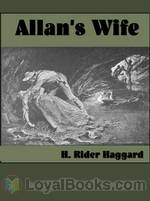 Allan's Wife
Allan's Wife
The story of Allan Quatermain's wife and further adventures of Allan Quatermain. | |
 Allan and the Holy Flower
Allan and the Holy Flower
Further adventures of Allan Quatermain | |
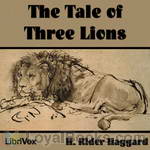 The Tale of Three Lions
The Tale of Three Lions
Taking place in the heart of Africa, “The Tale of Three Lions” is one more thrilling adventure from the eventful life of old hunter Quartermain, the famous hero of “King Solomons Mines”. This time, though there are no bloodthirsty people for the old hunter to deal with, the dangers are no less. He has to face the mighty and fierce King of Animals – the Lion. | |
 Colonel Quaritch, V.C.: A Tale of Country Life
Colonel Quaritch, V.C.: A Tale of Country Life
This is not your typical H. Rider Haggard adventure book yet it is full of mystery and intrigue including a coerced marriage, bigotry, adultery, murder and a buried treasure! This is the tale of an ancient family’s struggles to survive, one woman’s selflessness and another’s evil schemes; Two Gentlemen, two scoundrels and one very underestimated, loyal servant. Listen as the tale unfolds and guess where the treasure is hidden that can save them all! | |
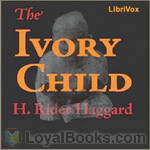 The Ivory Child
The Ivory Child
Allan Quatermain's first adventure with Lord Ragnall. (Introduction by laineyben) | |
 The Wizard
The Wizard
Described by the author, best known for his King Solomon's Mines, as "a tale of victorious faith," this story begins on a Sunday afternoon in an English church. Most of the book, though, is set in Africa, and the adventure story is as engaging as any of Haggard's African tales. What makes this one different is the religious question: What has happened to miracles in the church? Is there any power left in Jesus' promise, "Whoso that believeth in me, the works that I do he shall do also, and whatsoever ye shall ask in my name, that will I do"? | |
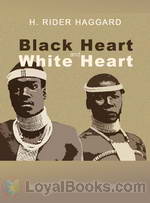 Black Heart and White Heart
Black Heart and White Heart
Black Heart and White Heart, is a story of the courtship, trials and final union of a pair of Zulu lovers in the time of King Cetywayo. (Introduction by H. Rider Haggard) | |
 Eric Brighteyes
Eric Brighteyes
The Saga of Eric Brighteyes is the title of an epic viking novel by H. Rider Haggard, and concerns the adventures of its eponymous principal character in 10th century Iceland. Eric Thorgrimursson (nicknamed 'Brighteyes' for his most notable trait), strives to win the hand of his beloved, Gudruda the Fair. Her father Asmund, a priest of the old Norse gods, opposes the match, thinking Eric a man without prospects. But deadlier by far are the intrigues of Swanhild, Gudruda's half-sister and a sorceress who desires Eric for herself. She persuades the chieftain Ospakar Blacktooth to woo Gudrida, making the two men enemies. Battles, intrigues, and treachery follow. | |
 Lysbeth, a Tale of the Dutch
Lysbeth, a Tale of the Dutch
This is a great book if you're looking for an adventure filled novel. It takes place during the Spanish Inquisition and describes some of the horrors that happened giving you an idea of what it was really like to live during that time period. Follow Lysbeth, a young Hollander girl, as she struggles through life enduring times of hardship and peace, sorrow and happiness, war and love. (Introduction by Abigail Rasmussen) | |
 The Brethren
The Brethren
Set in the days of the Crusaders, this books tells of a young maiden named Rosamund, and her twin cousins. Godwin is the grey eyed thoughtful man, and Wulf is the blue eyed warrior. They are both knights of England and they are both in love with their fair cousin. But the riddle of the story is which does Rosamund love?The adventure begins when Rosamund is taken from England and carried to the East. The plot thickens as the two young knights follow her in hopes of rescuing her from the Muslim leader, Saladin... | |
 Marie: An Episode in the Life of the Late Allan Quatermain
Marie: An Episode in the Life of the Late Allan Quatermain
This is a superb sweeping romantic adventure story of how Alan Quatermain, hero of fourteen of Rider H Haggard's books, met, fell in love with and married his first wife. It is related from the perspective of old age and is set against the time of the Great Trek in the 1830s. The villains of the piece are truly villainous, Dingaan a portly traitorous despotic Zulu chief, and a Portuguese killer who constantly plots to kill our hero and steal his wife.This book is written with histrionic flair typical of the Victorian era, gripping battles combined with scenes of fervent emotion... | |
 Beatrice
Beatrice
Beatrice is a lonely twenty-two year old woman. After saving Geoffrey's life, they fall in love. However, Geoffrey is married. In addition, a local rich land owner wants to marry the beautiful Beatrice. This is a romance by the author of King Solomon's Mines, Allen Quatermain, and She." | |
 Stella Fregelius
Stella Fregelius
Following a shipwreck Stella is preparing to die but is unexpectedly rescued. A love triangle of an unusual sort develops where an inventor of the mobile phone, back in 1900, who is engaged, becomes involved with a woman who has a passionate mystical influence on him. The story explores the nature of death and how we should look forward to it as being a great step to a greater world. | |
By: H.B. Fyfe (1918-1997) | |
|---|---|
 D-99
D-99
Five citizens of Terra were being held on other worlds -- and the ultra-secret Department 99 existed only to set them, and others like them, free. | |
By: H.H. Bashford (1880-1961) | |
|---|---|
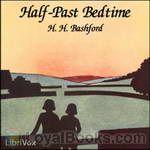 Half-Past Bedtime
Half-Past Bedtime
Ah, the wonderful adventures of Marian after she meets the strange Mr. Jugg. "And who are you, Mr Jugg?" she inquired. "I'm the King of the Bumpies," he replied. When Marian was puzzled there came a little straight line, exactly in the middle, between her two eyebrows. "What are bumpies?" she said. "My hat!" he gasped. "Haven't you ever heard of bumpies?" Marian shook her head. "Oh dear, oh dear!" he sighed. "Have you ever heard of angels?" "Well, of course," said Marian. "Everybody's heard of angels... | |
By: Haggard, H. Rider (1856-1925) | |
|---|---|
 Ayesha, the Return of She
Ayesha, the Return of She
Ayesha, the return of She, is set 16 years after the previous novel She. Horace Holly and Leo Vincey have spent the years travelling the world looking for Ayesha, along the way they experience many adventures, including avalanches, glaciers and even death-hounds before finally arriving in the court of Kaloon. At the court, they hear tell of a woman who Leo suspects to be Ayesha, however things are never simple and conflict soon follows them to Ayesha’s court. (Summarised from Wikipedia) | |
By: Hamilton Wright Mabie (1846-1916) | |
|---|---|
 Fairy Tales Every Child Should Know
Fairy Tales Every Child Should Know
This is a collection of well known fairy tales by various authors, including the Brothers Grimm, Charles Perrault and many others. | |
 Myths That Every Child Should Know
Myths That Every Child Should Know
A selection of famous and timeless myths, adapted for a junior audience. | |
 Heroes Every Child Should Know
Heroes Every Child Should Know
The endeavour has been made in this volume to bring together the heroic men of different races, periods and types; and in the selection of material the most attractive, intelligent and authoritative literature has been drawn upon. In cases in which the material selected belongs distinctively to the best literature, no changes have been made, although narratives have been abbreviated; in cases in which the material has a historical rather than a distinctively literary quality, the text has been treated for "substance of doctrine," and omissions have been freely made, and connecting words, phrases and even sentences have been introduced to give the narrative clear connection and completeness... | |
By: Hans Aanrud (1863-1953) | |
|---|---|
 Lisbeth Longfrock or Sidsel Sidsærkin
Lisbeth Longfrock or Sidsel Sidsærkin
Lisbeth Longfrock - (Sidsel Sidsærkin in its original Norwegian) was seen by the author as a book written for adults, telling the story of a young girl growing up in a farming district in a steep-sided Norwegian Valley. It was first written when the author's daughter was 8 years old, the age of Lisbeth when the book begins, so she would know about his childhood spent in similar surroundings, living on a farm and spending summer in charge of the cows and goats on the mountain pastures. | |